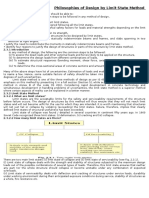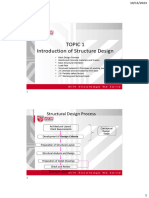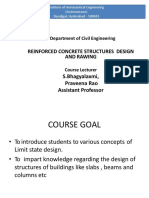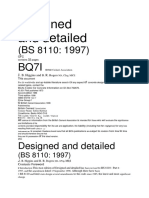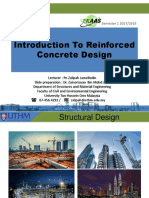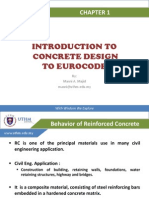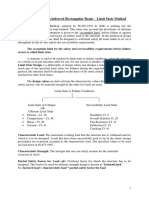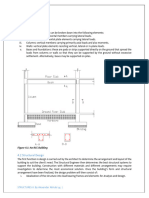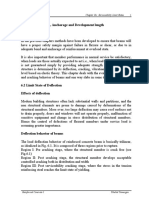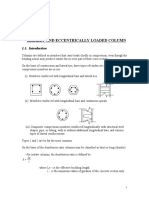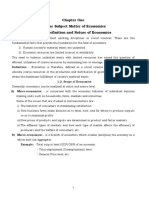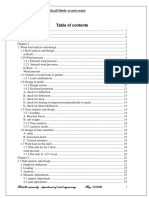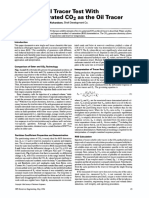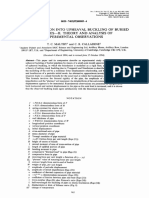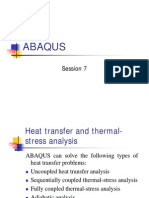0% found this document useful (0 votes)
64 views10 pages1 Limit State Principles
The document discusses limit state design principles. It introduces the concept of limit states as criteria that define when a structure becomes unfit for use, such as collapse, excessive deflection, cracking, vibration etc. It then describes using partial safety factors to account for variability in materials strengths and loads. Characteristic material strengths and loads are defined based on statistical analysis to represent worst case scenarios with a low probability of being exceeded. The design aims to ensure structures do not reach limit states throughout their design life by providing an adequate margin of safety calculated using probability considerations.
Uploaded by
dilnessa azanawCopyright
© © All Rights Reserved
We take content rights seriously. If you suspect this is your content, claim it here.
Available Formats
Download as DOC, PDF, TXT or read online on Scribd
0% found this document useful (0 votes)
64 views10 pages1 Limit State Principles
The document discusses limit state design principles. It introduces the concept of limit states as criteria that define when a structure becomes unfit for use, such as collapse, excessive deflection, cracking, vibration etc. It then describes using partial safety factors to account for variability in materials strengths and loads. Characteristic material strengths and loads are defined based on statistical analysis to represent worst case scenarios with a low probability of being exceeded. The design aims to ensure structures do not reach limit states throughout their design life by providing an adequate margin of safety calculated using probability considerations.
Uploaded by
dilnessa azanawCopyright
© © All Rights Reserved
We take content rights seriously. If you suspect this is your content, claim it here.
Available Formats
Download as DOC, PDF, TXT or read online on Scribd
/ 10

























